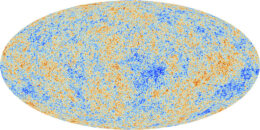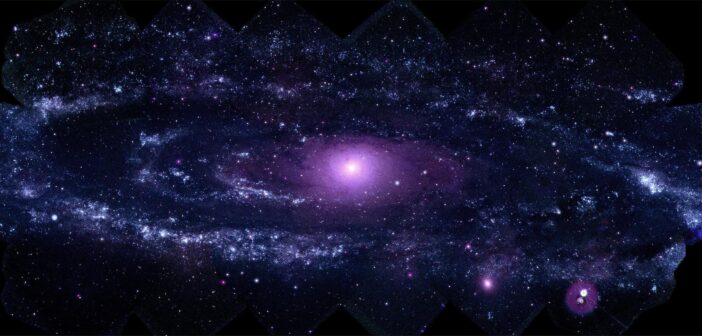The cosmological constant, once rued by Einstein as his greatest blunder, is back in style. Researchers have used an entirely new method to determine the value of this constant — thought to be related to dark energy — using a galaxy in our cosmic backyard.
Accounting for Acceleration

An image of anisotropies in the cosmic microwave background. The Planck satellite studied the cosmic microwave background to measure several important cosmological parameters. [ESA and the Planck Collaboration]
Researchers have devised a number of ways to measure quantities relevant to the cosmological constant. For example, the Planck mission mapped the tiny imperfections and non-uniformities in the cosmic microwave background — the oldest light in the universe — to measure the cosmological constant on a global scale. But as with all active areas of research, it’s important to make measurements in multiple ways to test our theories from all angles. How might we probe the cosmological constant on an entirely different scale?

An illustration of the Local Group of galaxies, which contains the Milky Way and Andromeda, as well as some of its near neighbors. Click to enlarge. [Antonio Ciccolella; CC BY 4.0]
Local Solutions to Global Questions
David Benisty, Anne-Christine Davis, and Wyn Evans (University of Cambridge) used pairs of galaxies locked in a gravitational dance to place constraints on the value of the cosmological constant. Their method hinges on the fact that the fabric of spacetime, from the space between the stars to the gaps between galaxies, is expanding under the influence of dark energy. This means that encoded within the orbital motions of any gravitationally bound galaxy pair is the subtle pressure of dark energy, forcing the galaxies apart as gravity pulls them together.
Benisty and collaborators analytically solved the two-body problem that describes the orbits of the Milky Way and its most massive neighbor, Andromeda, and accounts for the repulsive influence of dark energy. In doing so, they constrained the value of the cosmological constant over a few million light-years — a much smaller scale than the Planck mission, which drew its conclusions from the cosmic microwave background that suffuses the entire sky.
Upper Limits and Other Applications

Constraints on the cosmological constant, Λ, compared to the constraints determined from Planck data. Future measurements, such as with JWST, are anticipated to greatly improve the constraint placed by the binary galaxy method. [Adapted from Benisty et al. 2023]
Benisty and collaborators also used their method to place constraints on other theories of gravity. While these constraints were less restrictive than those placed on the cosmological constant, the technique is still valuable as it constrains modified gravity on scales of millions of light-years rather than the solar-system-sized scales from previous work.
Citation
“Constraining Dark Energy from the Local Group Dynamics,” David Benisty et al 2023 ApJL 953 L2. doi:10.3847/2041-8213/ace90b

